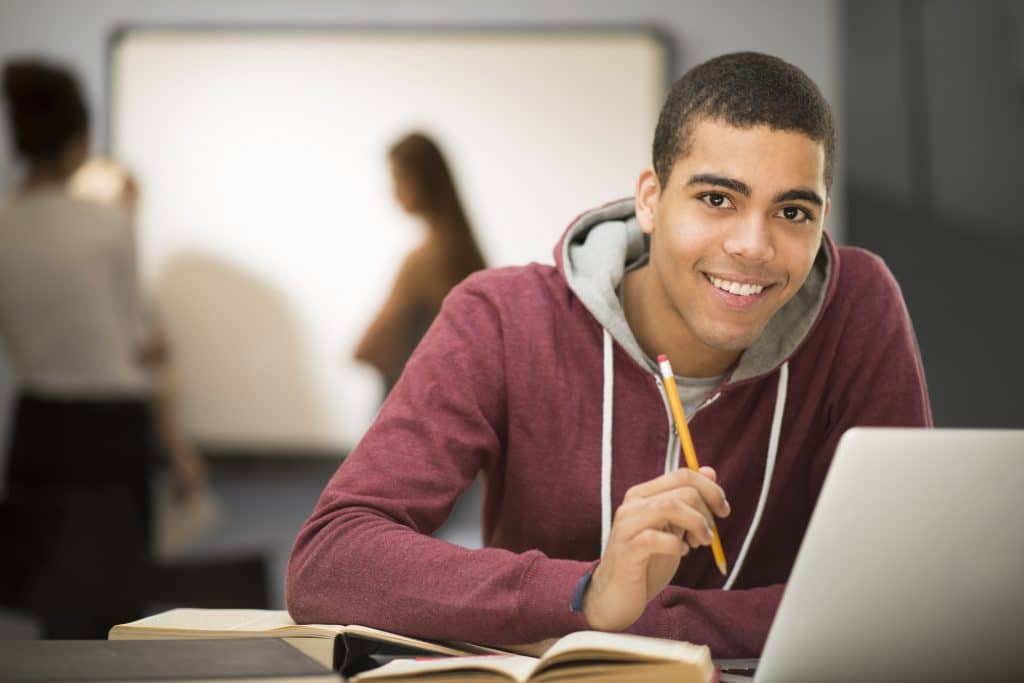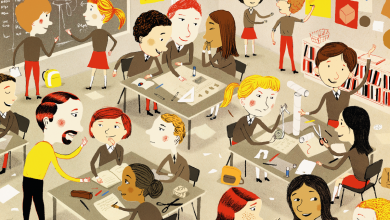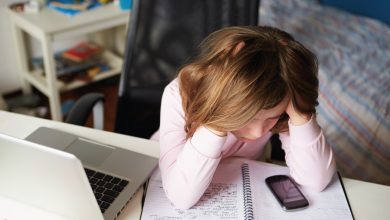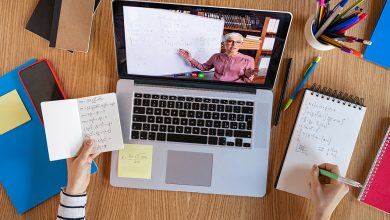We need to provide more refined digital product assessment frameworks to help teachers and parents
John was a great writer. His creativity was remarkable but rarely exploited in regular English classes because his writings were a bit ‘dark’, said the teachers. He was an exceptional drawer and an innate artist. He had clinical depression.
Yenny was a very aggressive student. She constantly got into fights with her classmates and teachers because of the smallest thing. She had a quick temper but a great heart. Yenny needed someone who would take her problems seriously and who’d give her advice when things didn’t go right. She needed someone who cared honestly.
Angela was a high-achiever. She was one of the best students in the class, always getting the highest marks and all the medals. However, she was isolated and shy because she never felt she was good enough. She always sought validation from her teachers and friends. She needed external validation because of her fixed mindset.
Stories of sadness, anger, frustration, rage, awkwardness and pain are at the center of every classroom in the city, country, in the world. However, in education, we have been driven mostly by academic standards, evaluation and testing, and have appointed the development of students’ human component to home-room teachers and school psychologists. As if the development of the person were something secondary to the educational process, when it is pivotal. Focusing on standards and comparing our classrooms’ to Finland’s does a disservice to our students and to the educational process in general. It is time we overcome our need for perfection and high scores and educate the kids we have in front of us. Those children, teenagers, and young adults with dysfunctional homes, broken hearts, and an immense potential to make unique contributions to our world. Fortunately, COVID-19 came to our lives to force us to stop and redesign our teaching practices at an unprecedented speed.
But how do we have time to notice these things if we have to cover the curriculum, and make students pass State exams, and certify their competences in different fields?
Six years ago the answer to that question came unexpectedly and unwillingly to me when I decided to flip my class. I flipped my classrooms because of practicality, because I was teaching in a blended program and wasn’t seeing my students very frequently and had to maximize those class sessions I actually had with them. Thus, as I flipped my content and started to spend more time with my students, I realized the importance of paying attention to the human component which was overpowering their ability to focus, study and live up to their full potential. Then I realized that I wanted to be THAT teacher (Buitrago, 2018). I became aware of the need for attending to my students’ personal and emotional experiences to craft learning experiences that were not only useful academically for achieving the goals on the curriculum, but that also helped students grow and develop at a personal level.

So, I came across positive psychology (Seligman, 2002) as a way to find practical applications of well-being that I could easily take to my classroom. I started designing materials that would not only help students learn verb tenses, increase their writing competence and improve their speaking ability, but that also could help them be aware of their strengths and helped them see themselves as successful beings regardless of their past experiences. I started this journey of positive education with a HyperDoc (Highfill, Hilton & Landis, 2016) I designed for my Upper Intermediate English class on Present Tenses with the integration of mindfulness and a revision of students’ character strengths. Students were not only baffled by the methodology used (i.e. The HyperDoc) but really appreciative of the content shared.
See HyperDoc here: https://docs.google.com/presentation/d/1o657WFBEvCtgwdc8WqVZmB1B6S9jdBfeMOKFcWayZo0/present
That semester I realized that opening up a space in our classrooms for talking about character strengths, resilience, to do mindfulness meditation among other positive practices had a powerful impact on our students’ lives and views of themselves and the teaching profession. So these practices became a part of my teaching style. I recently joined an MA in Positive Education to professionalize this knowledge and to strengthen my practices for the betterment of my students’ lives.
Positive psychology and positive education
In his American Psychology Association Presidential address in 1998, the newly appointed President, Martin Seligman, PhD., announced Positive Psychology as the future of the profession. He mentioned how psychology in the XX century had focused on healing and curing mental illness, and how our current world needed a perspective shift into understanding what makes people flourish and live full lives (Seligman, 1998). He also asserts that by becoming “solely a healing profession, we forgot our larger mission: that of making the lives of all people better” (Seligman, 1998, p. 2) interjecting the profession to emphasize on the “foster[age] and growth of the new science and profession of positive psychology” (p. 3). Thus, since then, psychology has looked into new directions for the well-being of people through the identification and maximization of people’s character strengths and their happiness (Seligman, 2002) and overall flourishment (Seligman, 2011).
But, how does this translate into our everyday lives as educators if we are not psychologists and we have been instructed to stay away from students’ emotional and psychological problems because of our lack of training?
We do it through positive education and socio-emotional learning!
Nowadays, we can bridge the gap between our students as learners and as whole people by means of integrating principles of positive psychology within the school or university curriculum. In the past, institutions already fostered values, the construction of self-esteem, conflict resolution and other competences of the self that could help the person flourish. However, programs like Aulas Felices (Arguís Rey et al., 2012) have intentionally and explicitly integrated the principles of positive psychology within their academic activities at all levels in the curriculum.
TED Talk by Ricardo Arguís, leader of Positive Education in Spain: https://www.youtube.com/watch?v=ARcB9KUdv9M
Another way of looking at the person as a whole is the framework presented by the Collaborative for Academic, Social, and Emotional Learning (CASEL), which presents a model of five socio-emotional learning competences that can be, and should be developed gradually throughout students’ school lives. This framework fosters five core competencies, namely self-awareness, self-management, social-awareness, relationship skills, and responsible decision-making. CASEL is an organization that supports schools and districts in the implementation of socio-emotional learning programs.
CASEL Competencies: https://casel.org/wp-content/uploads/2019/12/CASEL-Competencies.pdf
Even though positive education and socio-emotional learning come from different authors and different institutions, they share a commonality and it is the development of the self. They both recognize the educational institution as a powerful agent of well-being for students and their families. And although they don’t “regulate” how institutions should set up their positive education programs, they provide some insights on how we can approach these issues without trespassing our boundaries as educators.
Positive education during COVID-19
Humans need connection, especially in times like these. The confinement has revealed many of our emotional needs as teachers, parents and students, and has shown us the importance of PERMA (Positive emotions, Engagement, Relationships, Meaning, and Achievement) (Seligman, 2011). In the contingency created by this pandemic, we have had to face our fears and our students’ difficulties more closely than ever. Thus, we need to seize this opportunity to make changes in our classrooms and our lives to make justice to the human component in all of us.
Thus, we can merge the best of two worlds, technology and positive education, to generate unforgettable and flourishing learning experiences during this challenging time of remote teaching and learning. I have been able to do this since the quarantine started thanks to flipped learning. For me, flipped learning is a compassionate teaching methodology in which students are placed at the center of the learning process and teachers are architects of authentic, meaningful, and intentional learning experiences for both spaces of learning (in and out the classroom). Thus, as architects of these learning experiences that intend to develop students as whole beings, we can integrate positive practices in our classes regardless of what we teach.
For me, Flipped learning is a compassionate teaching methodology

Some positive practices you can implement
1. Character strengths profiles: You can find the VIA Character strengths test for free at https://www.viacharacter.org/survey/account/register and use it purposefully to teach students about their character strengths and how to potentialize them. You can take the test both in English or Spanish (even French if that’s what you teach) and get a free report of the position on which your strengths are. You also get a more detailed report of your five signature strengths (the first five on the result). You can use these signature strengths with students in many ways.
2. Mindfulness meditation: There is research that supports the immense power of mindfulness meditation in people’s betterment of health, concentration, positive emotions, savoring, etc. (Puig, 2007). You can include meditation in your sessions every day to help students set the mood for your class, relax at the face of technological difficulties, and embrace the class with a calmer attitude. For including mindfulness in your classroom, you can do so with www.gonoodle.com or simply looking for Eline Snel on YouTube if your students are children, or simply mindfulness meditation if your students are bigger.
3. Three good things: Seligman’s work has demonstrated the importance of gratitude and positive emotions in people’s well-being. In a positive psychology intervention carried out with American soldiers, Seligman asked people to write down three good things that went well that day and why they had gone well. People who followed this exercise for eight weeks noticed a change in their mood and overall perception of life. If you are interested in this exercise, you can direct your students to: https://ggia.berkeley.edu/practice/three-good-things
4. Gratitude journal: Being grateful is one of the highest positive emotions (Frederickson, 2003) Most religions are also based on thankfulness towards a superior being for all the goods received. We as humans are wired to look for the negative parts of our lives to protect ourselves and we constantly ignore all the good. Thus, keeping a gratitude journal can keep us focused on the beautiful things we have in life, increasing our positive emotions and making our life better.
TED Talk by Hailey Bartholomew on her 365 Grateful Project https://www.youtube.com/watch?v=zaufonUBjoQ
CARPE DIEM, blog by student Sergio Díaz at Institución Universitaria Colombo Americana -ÚNICA as part of a gratitude project led by Professor Mauricio Aldana
5. Growth mindset: One of the most amazing applications of positive psychology in education is that of developing a growth mindset and helping our students do the same. Many of us have grown thinking that intelligence is fixed and that we can not do much to change it, either we are intelligent or we are not. Thanks to Carol Dweck and her research, we now know that intelligence is malleable and we can make it grow as we learn. If you want to check an amazing application of Growth Mindset research with teachers in Bogotá you can check http://martharamirez.com.co/blog/investigacion-sobre-la-mentalidad-de-crecimiento-en-educacion/
“Carol Dweck: The Growth Mindset” – Talks at Google
6. Strong relations between schools and families: Positive relations are the pinnacle of positive psychology theory. Nowadays, they are crucial for the successful learning experience of our students and for our own self-care. Parents are stressed out with the challenges of teleworking and helping their kids with their academic work (I am a mom, I know). So, it is pivotal to build strong, healthy, non-violent relations between parents and schools to guarantee everybody’s victory in these confusing times. In this regard, the work of Marshall Rosenberg on non-violent communication can be helpful.
There can be many more applications of positive psychology: resilience building (Reivich & Shatté, 2003), grit (Duckworth, 2016), and flow (Csikszentmihalyi, 1990) in our institutions and our own classes. However, it is pivotal to realize that any of these interventions will only work if made consistently and as part of a whole school initiative. Of course, teachers can do them in the privacy of their own classes, but if students have amazing positive interventions in one class and a humiliating and offensive teacher in another, very little can be achieved in the overall well-being of the school. The invitation is to create a whole school program that includes teachers, students and parents to see powerful results. Covid-19 revealed the importance of humanness and connection even in a time of social distancing. RM
but if students have amazing positive interventions in one class and a humiliating and offensive teacher in another, very little can be achieved in the overall well-being of the school.





